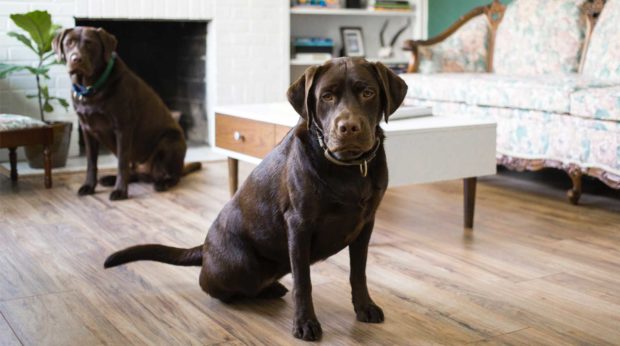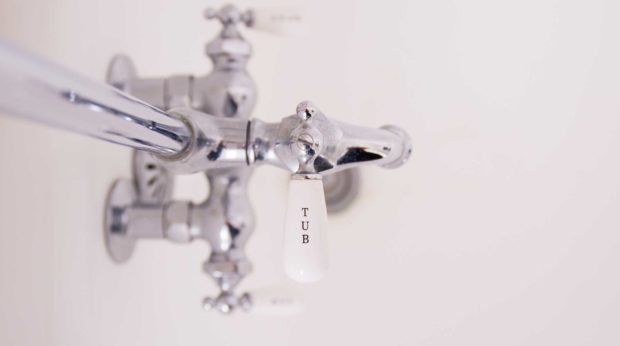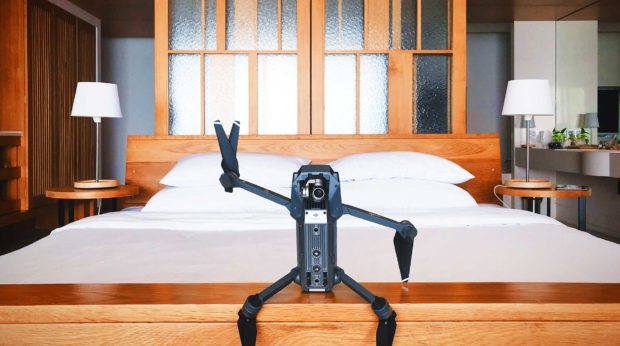Spoiler alert! The home of the future is unlikely to be a curvy white pod on stalks. Yes, some parts of the world might resemble the set of Logan’s Run, but most of the houses standing in 2044 have already been built.

The shell will remain familiar, but it will be a very different story on the inside.
Before we take a tour, let’s just remind ourselves of two significant macro factors that will influence our future living space:
- An ageing and growing population with less land to build on means that more people will need to live together in smaller spaces. Homes are going to need to become increasingly adaptable and multipurpose.
- Environmental concerns and growing energy demand will force homes to become much more sustainable in terms of what they are built with, how they are powered and how they recycle the waste they produce.
Now that’s out of the way, let’s take a Llewelyn-Bowen-esque saunter up the road and look at the home of the future.
Front door

No more worrying about where you put your keys. Opening the front door will most likely involve waving a device at it. Related technology will turn on the lights and play your choice of music. Of course, you will probably have arranged for that to happen while you were elsewhere. Houses will be interactive and fully wireless, allowing us to access data from any point.
Living room

The sitting room is still a place for relaxation and entertainment. The TV has disappeared – although the name will remain – and has been replaced by a whole wall with an inbuilt display. Your armchair and your sofa adjust their settings to the individuals sitting on them. Voice commands are all it takes for your AI assistant to dial up a friend or family member to talk to, or select whatever film or music you wish to consume. All this technology is driven by the solar-power-collecting windows your home is fitted with.
Kitchen

Aside from the familiar adaptations already at play in the living room, we will see the increased use of robots to do the cooking and kitchen gadgets that do the shopping for us. But the significant change in the kitchen is its increased contribution to sustainable living. The waste-disposal system is likely to be run by nanobots, which will break down all matter into its component parts to be more efficiently recycled. With any luck, this waste will be collected by a pneumatic underground network of pipes, delivering it to recycling centres 24/7. No more worries about whether the bin men have been. Your smart fridge doesn’t just do the shopping; it also has a part to play in recycling. Smart packaging will work in tandem with your fridge to control the environment to suit different food types and reduce waste.
Bathroom

The big change in the bathroom will be the use of sensors. Your body is scanned while washing to detect when dirt has been removed, thus reducing water usage. All waste water will be harvested and recycled. Ultrasonic vibrations will probably remove the need for soap, but won’t smell as nice. In addition, body-scanning scales will provide you with a full body readout, which can then be sent on to your healthcare practitioner. A smart mirror will allow you to read the news and check your diary while cleaning your teeth. It will probably tell you how good looking you are too.
Bedroom

Still a place for sleep and a bit of the other, your bed itself is going to be even more of a friend. It will monitor your health and adjust its temperature as you sleep. Your pillows will feature noise-cancellation technology to ensure you sleep soundly if your partner snores. Technology will also control lighting to help you wake up during the dark winter mornings and stay asleep during the summer months.
Other features
A home is so much more than just four rooms, so here are a few more of our predictions:
- As houses become increasingly multipurpose, so interiors are likely to become more modular. You’ll be able to reconfigure spaces from living room to office and bedroom to gym.
- No need to redecorate every five years – smart walls and wallpaper will allow you to adjust your colour scheme to suit your mood or the occasion.
- Cleaning and essential home maintenance will be mainly done by robots, freeing up your time and removing the need to pop to B&Q.
- Home deliveries will arrive by drone, so your roof will probably have a landing pad.
- Every house will have a ‘grow-wall’ for fruit and veg. ‘Grow your own’ has become a necessity, as traditional farming methods have failed to keep up with population growth.
Ultimately, by 2044 all this home technology will be pretty much invisible. AI, VR and small robots will be commonplace and finding what to do with our extra leisure time will stress us more than having to do the dishes.
It’s worth remembering that pretty much all this technology exists right now, but don’t fear it. After all, a home is a feeling, not just a place.
Photos by Unsplashed



